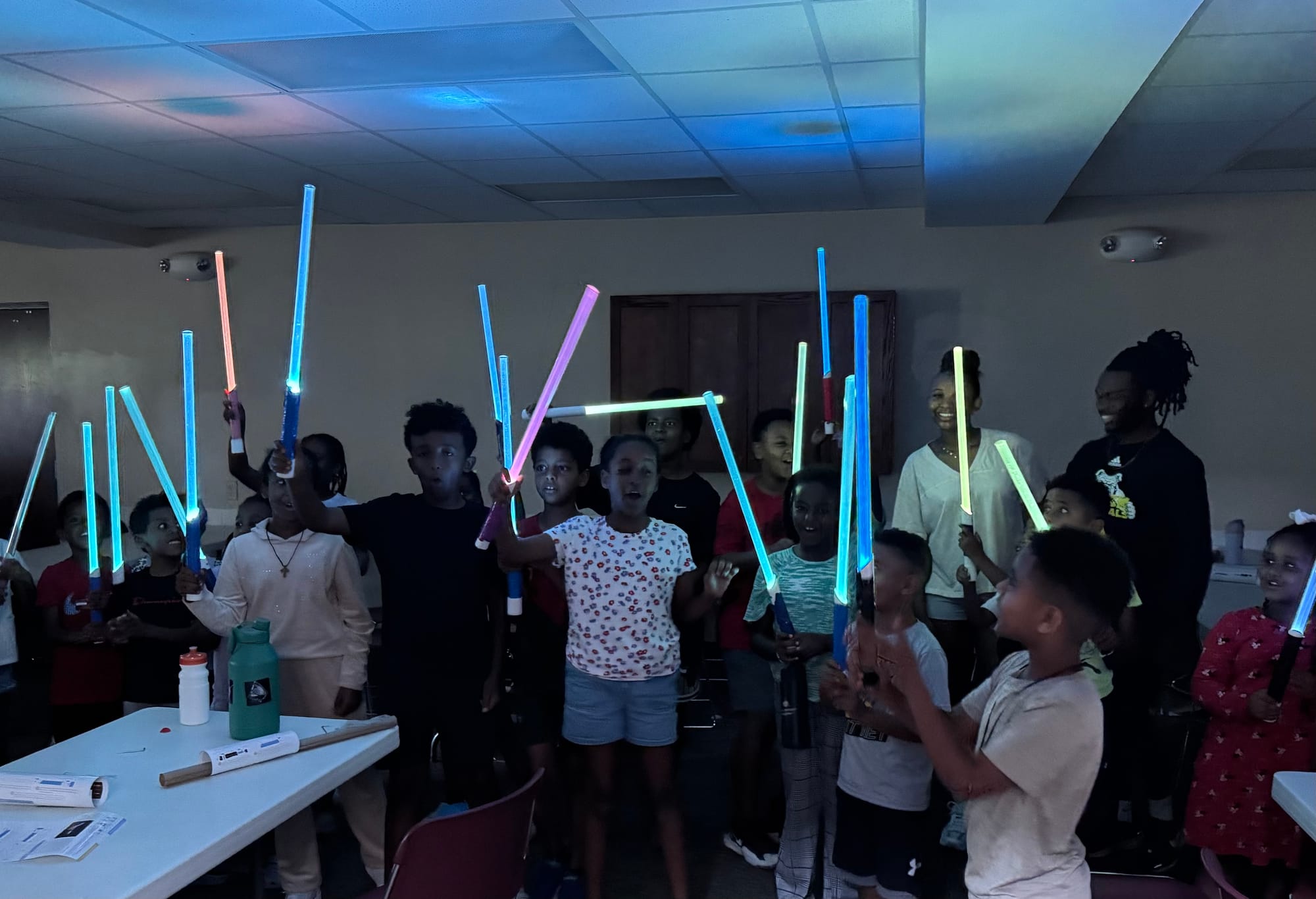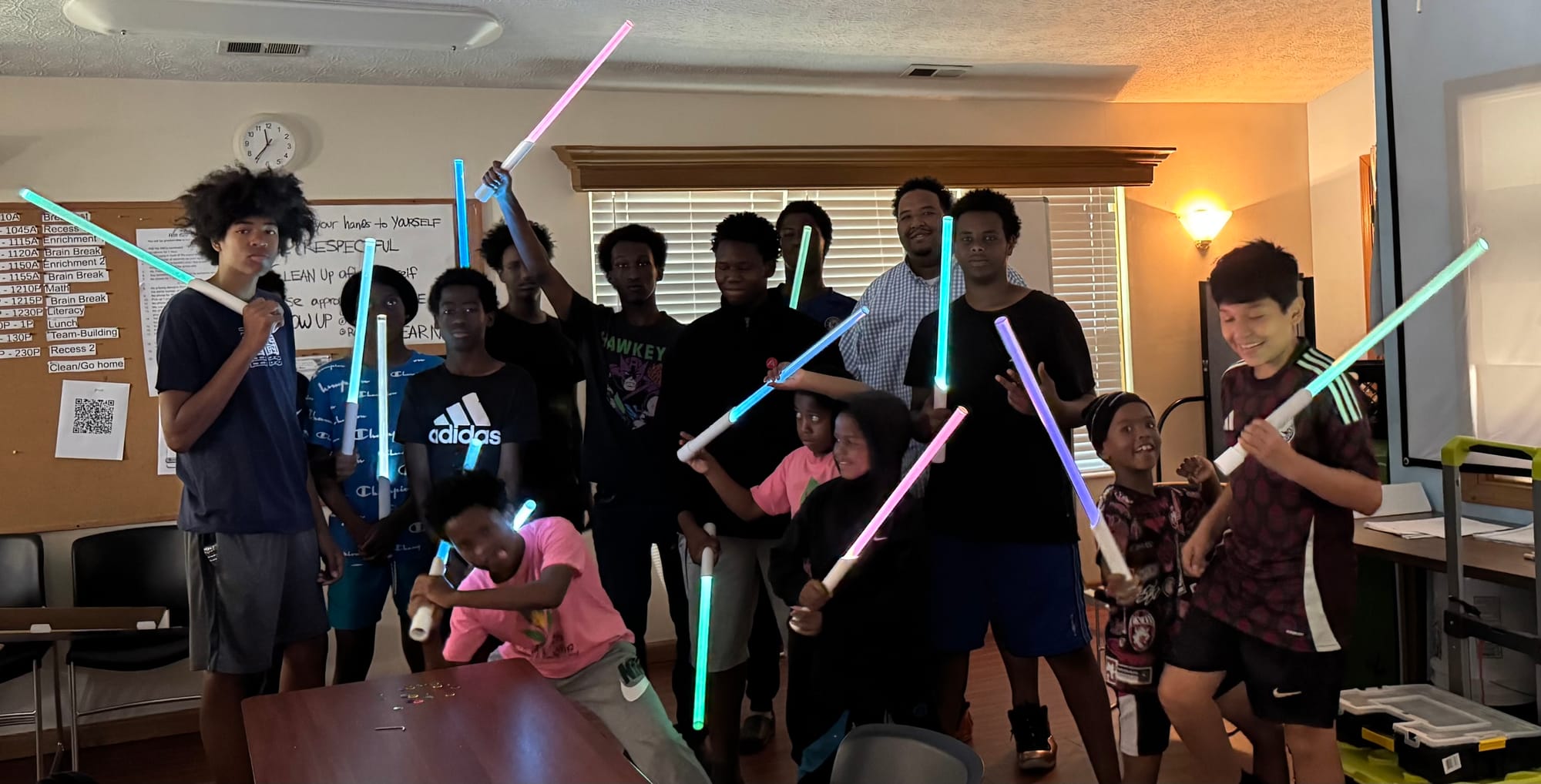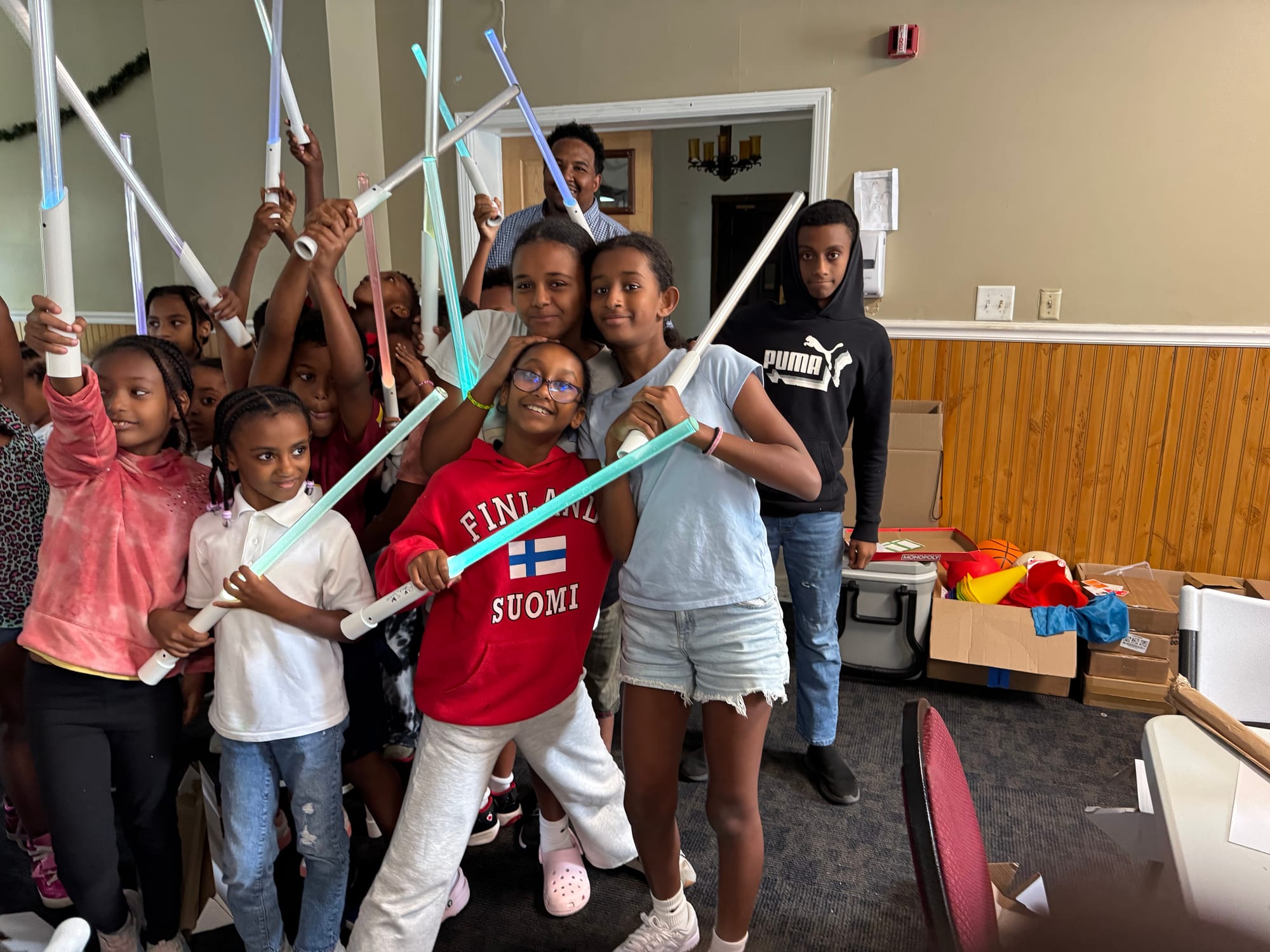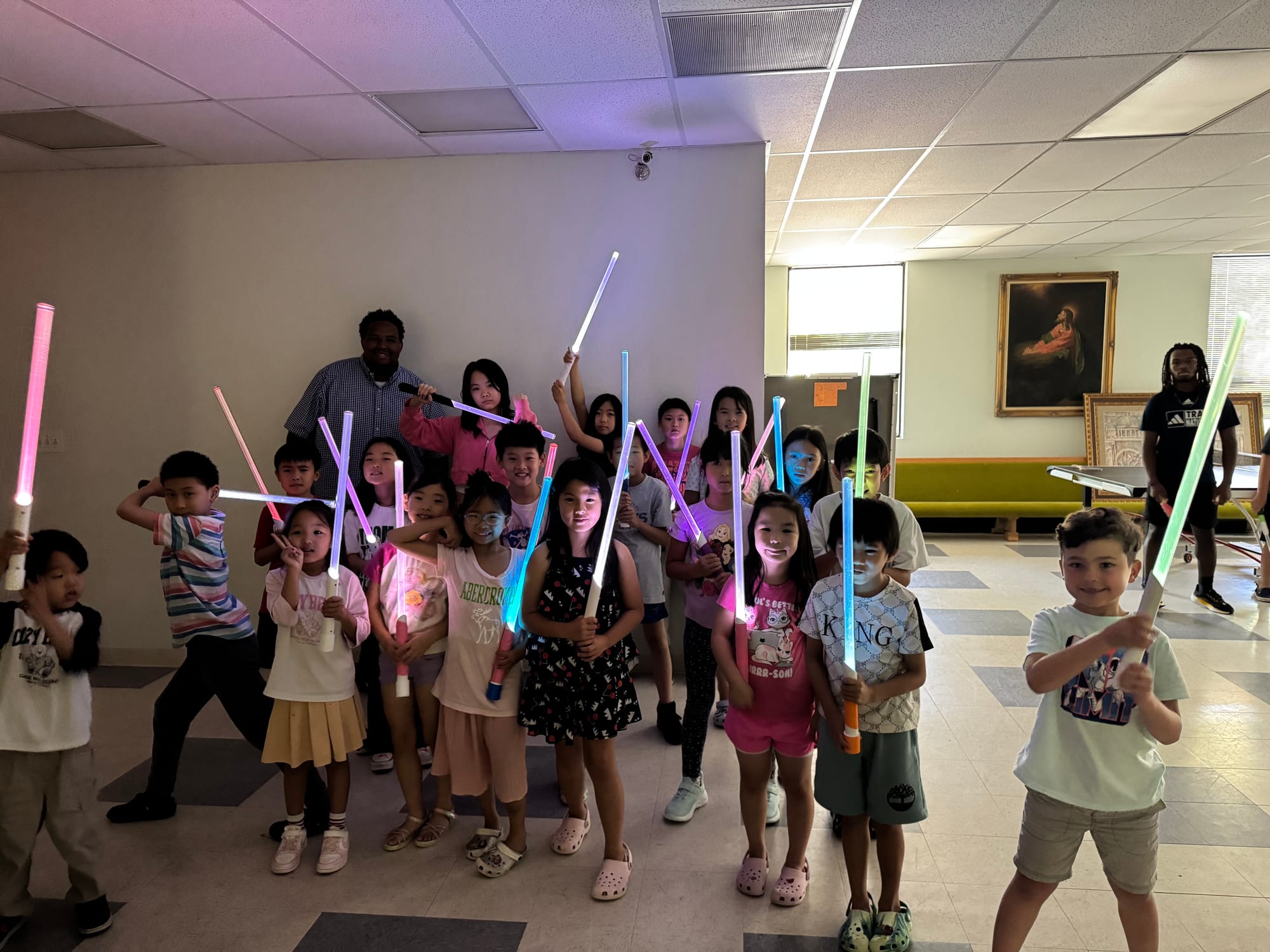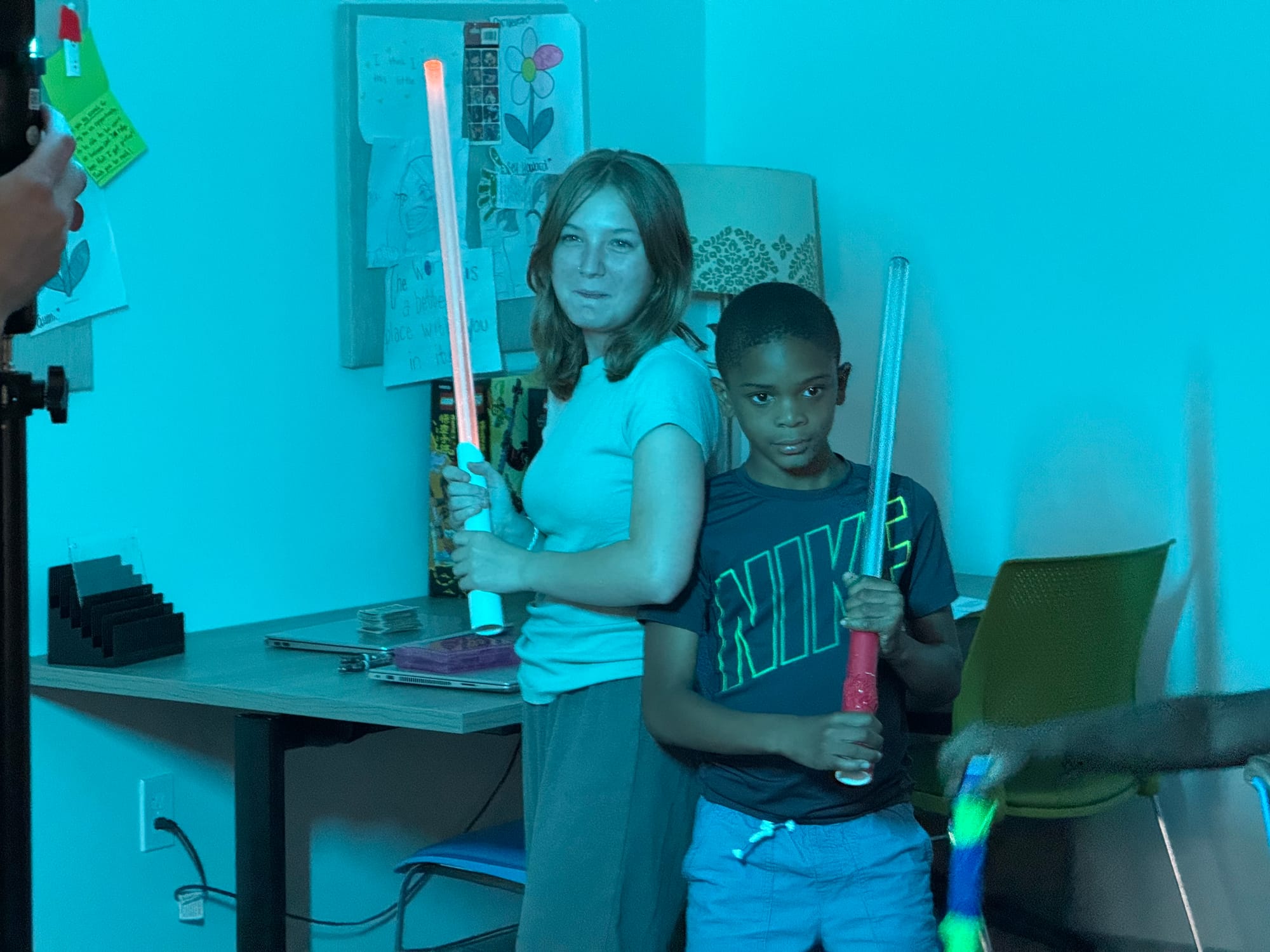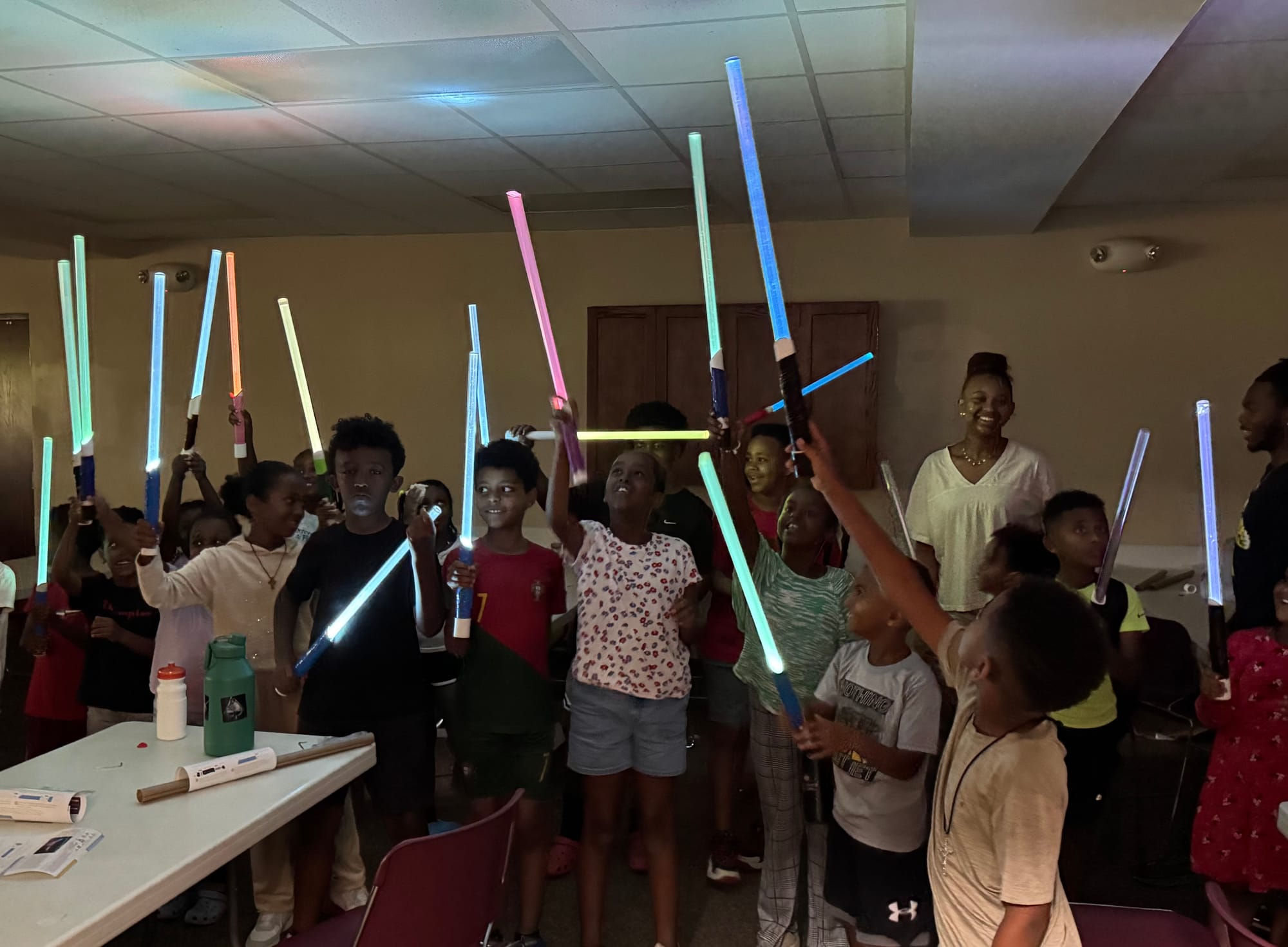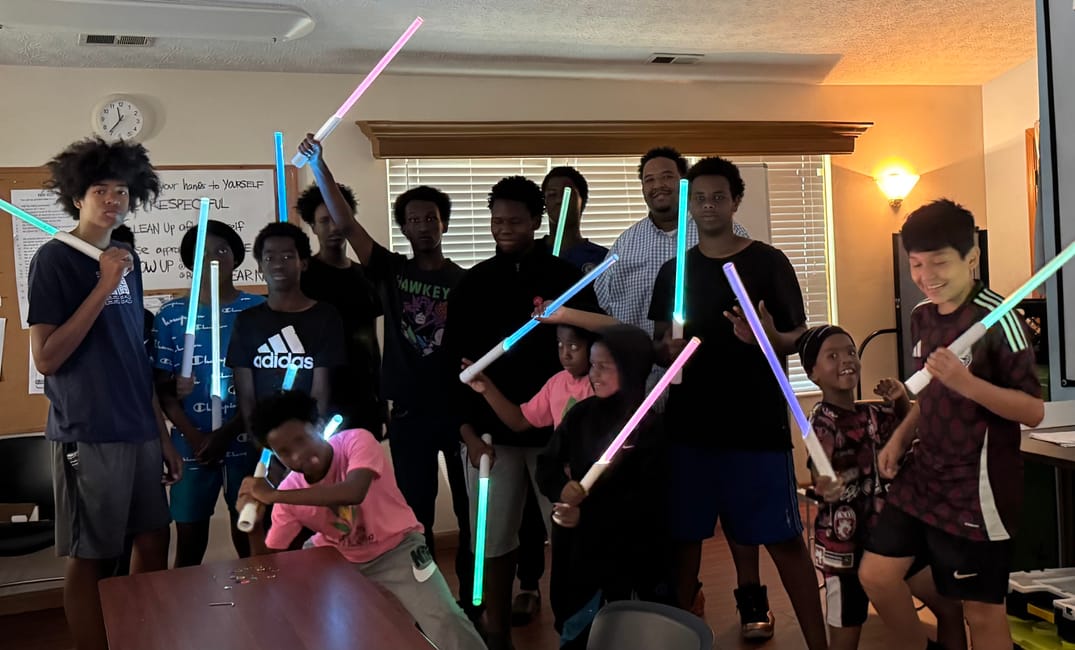Table of Contents
When I think about what’s missing in the world of learning today, I keep coming back to one word: imagination.
We’re living in a time when classrooms are often structured around rigid standards, performance metrics, and test prep. But where in that system is the space for wonder? For play? For dreaming? I believe we’ve shifted, as a society, toward a type of learning that doesn’t encourage future problem solvers or inspire bold dreamers.
After spending time in government, corporate America, and entrepreneurship, I’ve seen firsthand that what’s sorely lacking—across all sectors—is imagination.
Rekindling Imagination Through Play and Creation
This summer, I had the opportunity to help reignite imagination in the youth we serve. One powerful example: watching kids build and customize their own lightsabers in our SPARK STEM session.
You could see the joy on their faces—not just from putting something together—but from seeing their ideas come to life. That’s imagination in action. They weren’t just assembling parts; they were world-building.
This kind of hands-on, playful learning doesn’t just create good memories—it builds skills that are critical for the future.
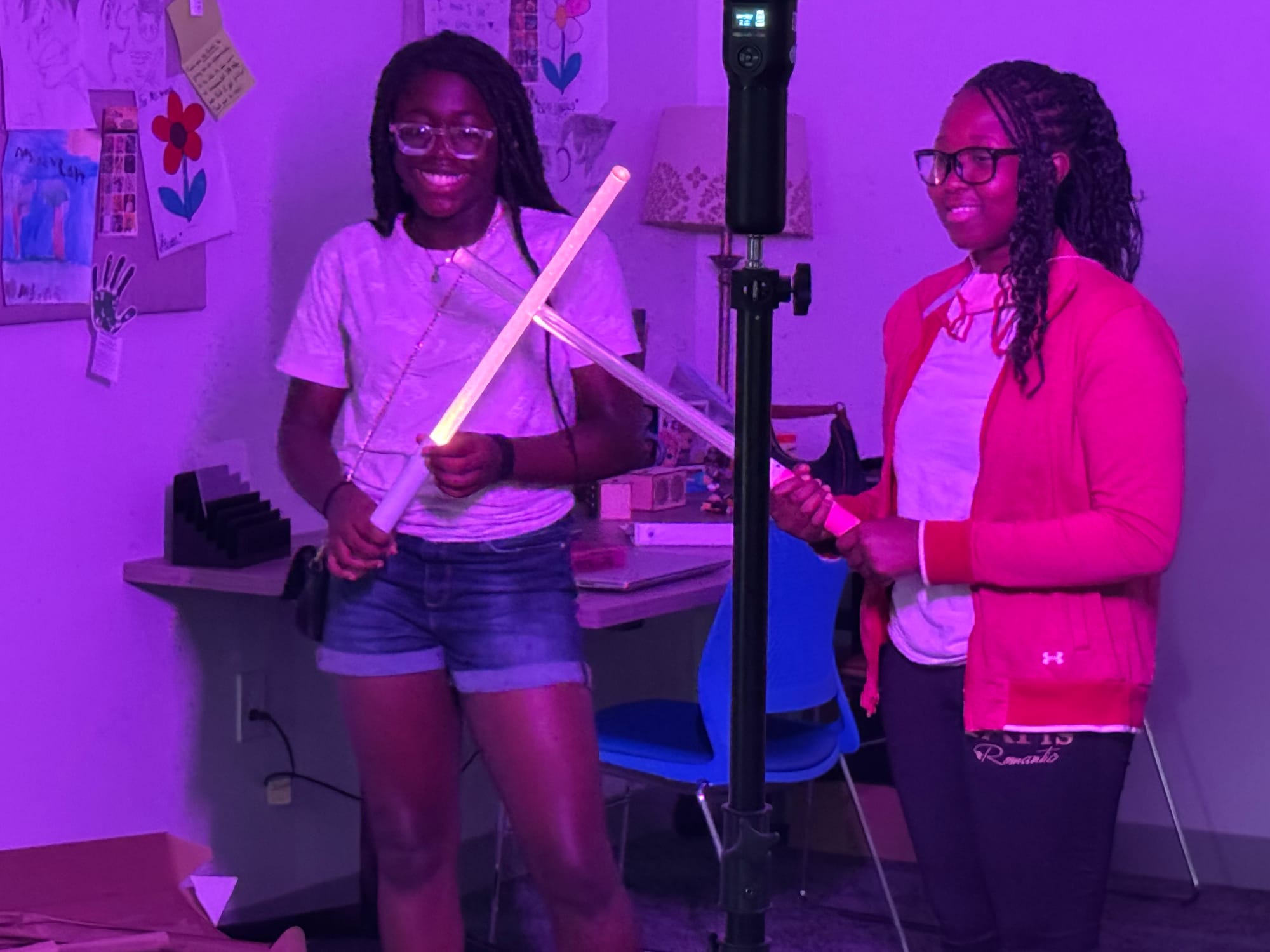
I became an engineer because of my imagination. I grew up watching Transformers, Star Wars, and Star Trek. I wanted to build robots. I wanted to understand space and physics. I wasn’t just learning STEM—I was inspired by story and possibility.
That’s why, over the years, we’ve leaned into using science fiction and comic book characters to introduce STEM ideas. They’re a bridge—an invitation into a bigger world of thinking.
But here’s something interesting I’ve noticed lately: many of the kids we work with don’t know Star Wars. It’s not part of their cultural sphere.
And yet, when we hand them a lightsaber, they get it. The object is iconic. Even without knowing the source material, they’re pulled in by the opportunity to create, to imagine.
That told me something important: stories change from generation to generation—but the power of imagination is timeless.
The Future Belongs to the Imaginative
As AI and automation evolve, the true advantage won’t be memorization or even technical skills. It’ll be imagination.
The ones who win in this next era will be those who can deploy their imagination through AI tools in ways we’ve never seen before. The innovators. The visionaries. The kids who once daydreamed about galaxies far, far away—or even the ones who dream up their own.
So if we want more engineers, more scientists, more game-changing creators—we have to start with imagination.
